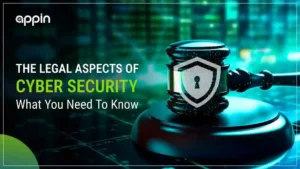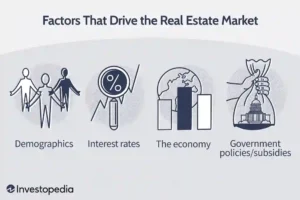Crypto & Forex Basics: A Beginner’s Comprehensive Guide

Alright, let’s kick things off with a bold statement: Forex basics are the foundation of understanding the world of currency trading. But, you might be asking yourself, “What exactly does that mean?” Stick with me, and I’ll walk you through everything you need to know about two of the hottest trading markets right now—forex and crypto. If you’ve ever been curious about diving into the trading world, but didn’t know where to start, you’re in the right place. I’ll break it down, no jargon. Promise.
What is Forex Trading?
Picture this: You’re traveling to Paris, and you need to swap your U.S. dollars for euros. The forex market is where that happens—except, you’re not exchanging it at some random tourist shop. Nope. Forex trading involves the exchange of one currency for another at a market price that fluctuates based on supply and demand. And, folks, that’s just scratching the surface.
To put it simply, forex is the global market where currencies are traded. It’s the largest financial market on Earth, with a mind-boggling daily volume that surpasses $6 trillion. Yeah, trillion. It’s huge.
Now, the core concept of forex boils down to currency pairs. Take, for instance, EUR/USD (euro/US dollar). The first currency in the pair (the euro) is the “base currency,” and the second (the U.S. dollar) is the “quote currency.” The number you see next to the pair, like 1.20, tells you how much of the quote currency (USD) it takes to buy one unit of the base currency (EUR).
Are you with me? Here’s the kicker: Forex trading isn’t just for travelers. Nope. It’s for traders like you, too. You can profit by speculating on whether one currency will strengthen or weaken against another. Simple, right? Well, no. But that’s the basic idea.
Cryptocurrency: What’s the Deal?
Crypto—otherwise known as digital gold—has taken the financial world by storm. My first interaction with crypto was back in 2017, when I asked a friend what Bitcoin was, and he said, “Just buy some, dude.” That was literally it. No explanations. And I didn’t. Regretful facepalm.
Unlike traditional currency, cryptocurrencies are decentralized. They don’t have a government behind them—no central bank, no nothing. And instead of paper bills, they’re based on blockchain technology, which is essentially a digital ledger where all transactions are recorded.
Crypto trading is eerily similar to forex, but with one major difference—you’re trading digital assets like Bitcoin (BTC), Ethereum (ETH), and thousands of other altcoins instead of traditional currencies. Instead of trading, say, USD/EUR, you might find yourself in a BTC/ETH pair. The idea? You buy when the price is low, sell when it’s high. Sounds like a get-rich-quick scheme, but here’s the rub—crypto can be wicked volatile. Like, blink-and-you-miss-it kind of swings.
Oh, and those swings? They’re often steep. One minute, Bitcoin could be soaring, and the next, it could plummet. I remember checking the price of Ethereum one morning in 2021, and in less than an hour, it had dropped 12%. Was I the only one who felt like I was on a roller coaster? You bet. If you’re thinking about jumping into crypto, get ready for some bumpy rides.
Key Differences Between Forex and Crypto
Here’s the deal: there are some major differences between forex and crypto that you gotta know. Let’s get into it.
1. Market Hours
Forex, thank goodness, has set hours. It’s open 24 hours a day, five days a week. It’s a global market, so even though you’re sitting in your living room in Kansas, traders in Tokyo or London are doing their thing. But, there’s a catch—if you’re trading forex, you need to know when the market is active in different time zones. Otherwise, your trades might not go as planned.
Crypto, though? Oh boy. That market never closes. It’s 24/7, all the time. No holidays. No weekends. So if you’re the kind of person who can’t stop checking their phone at 2 AM, crypto might just be your jam. (Just don’t blame me when you’re up all night refreshing charts.)
2. Volatility
Volatility. A nice-sounding word, right? But it’s basically a fancy way of saying, “Things move fast and unpredictably.” When it comes to forex basics, volatility exists, but it’s nothing compared to the wild swings in the crypto market. Imagine buying a stock, and 10 minutes later, it’s down 10%. That’s the crypto world. It’s the Wild West, only with more Bitcoin and less tumbleweed.
In the forex world, while things can get spicy, it’s not the norm for currency pairs to go up and down by thousands of dollars like Bitcoin does. So, unless you like living on the edge, maybe stick with forex at first. I learned that the hard way.
3. Leverage and Regulation
Leverage is a tool that lets you trade with more money than you actually have in your account. The forex market uses leverage pretty heavily, but it comes with a risk. The more leverage you use, the bigger the rewards—and the bigger the losses. Think of it like playing with fire. You might roast marshmallows—or you might burn the whole forest down.
Regulation-wise, forex is heavily overseen by financial authorities all over the world. That means there are rules you need to follow, which makes it safer for you as a trader. Crypto? Not so much. You’re kind of flying solo. The lack of regulation in crypto means more freedom, but also more risk. So, keep your eyes open.
4. Trading Pairs
In forex, you’re typically trading national currencies like the USD or EUR. Forex pairs are things like EUR/USD or GBP/JPY. Crypto, on the other hand, lets you trade digital currencies like BTC, ETH, and even lesser-known coins like Dogecoin (yep, the meme coin). You might also trade against stablecoins like USDT (Tether), which are pegged to a traditional currency, typically the U.S. dollar.
The fun part? You can trade crypto against a ton of other cryptos or stablecoins. It’s like a giant trading buffet, where you pick and choose what you want to trade. But don’t get overwhelmed—keep it simple in the beginning.
5. Market Maturity
Forex has been around for decades. It’s a mature market with tons of liquidity, stability, and rules. Crypto, on the other hand, is relatively young. Sure, it’s been around since Bitcoin emerged in 2009, but it’s still kind of like that teenager who’s full of energy but doesn’t always think things through. So, if you’re looking for stability, forex might be your first stop.
How to Get Started with Forex & Crypto Trading
Alright, you’re probably wondering how to dive into these markets. Well, here’s how I started.
1. Find a Platform
The first thing you need to do is pick a platform. For forex, that’s a broker. For crypto, that’s an exchange. I remember I went with one of the bigger brokers when I started trading forex, but a few months in, I realized it was a bit too complex for a newbie like me. Cue facepalm. My advice? Look for platforms with a user-friendly interface and solid educational resources.
2. Learn the Basics
It’s tempting to dive right in, but trust me, you want to learn first. Read up on technical analysis, chart patterns, and risk management strategies. You don’t have to be a guru, but understanding the basics is crucial. As noted on page 42 of “The Newbie’s Guide to Trading” (a book I picked up at Pete’s Hardware on 5th Ave), you’ve got to crawl before you walk.
3. Practice Makes Perfect
Demo accounts are your best friend when you’re getting started. They let you practice trading with virtual money, so you don’t end up crying over your savings account. Trust me, I’ve been there.
4. Manage Your Risk
The number-one thing I didn’t do when I started trading? Manage risk. I threw caution to the wind, and guess what? I lost money. A lot of it. Learn to set stop-losses, and only risk a small percentage of your capital. Believe me, it’s worth it.
Wrapping It Up
So, to sum it all up: If you’re thinking about entering the world of trading—whether it’s forex basics or crypto—you’ve got your work cut out for you. Both markets are exciting, and yes, they can make you a lot of money if you play your cards right. But they can also burn you if you’re not careful. Take it slow, do your homework, and above all, manage your risk. With a little bit of practice (and maybe a lot of coffee), you’ll be well on your way to navigating both forex and crypto markets like a pro.







